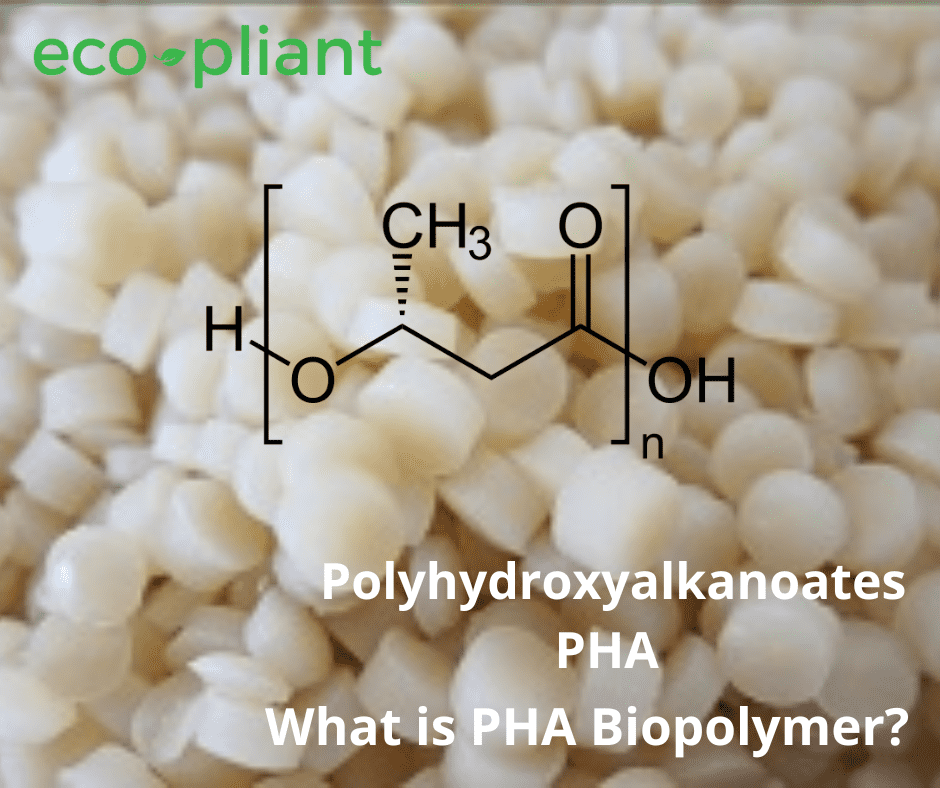
PHA (Polyhydroxyalkanoates): A Detailed Material Overview
What is PHA Biopolymer?
PHA, which is short for polyhydroxyalkanoates, is a class of bioplastic polymers, bio-based and bio-derived from feedstocks such as sugar beet and canola.
PHA is a naturally occurring group of polyesters.
“The natural occurrence of polyesters was observed as early as 1908 by Bougault and Bourdier•, who showed that the waxes obtained by extraction of the leaves of a variety of conifers are linear polyesterS of hydroxy-acids such as juniperic acid (c.l-hydroxypalmitic acid) and sabinic acid acid).” ¹
PHA plastic was invented by a French researcher named Maurice Lemoigne in 1925 but the research bounced around until 1990 when scientists were again looking at PHA in the biomedical industry.
Scientists were inventing several types of plastic during these times utilizing different manufacturing methods, with PHA coming out as a top candidate for a plastic that was biodegradable and profitable.
“Among the different types of biopolymers, polyhydroxyalkanoates (PHAs) present a promising group of polymers, as they are biocompatible, thermoplastic, and non-toxic, which makes them suitable for various applications in industry, medicine, or agriculture.”²
How is PHA Made?
PHA begins with micro-organisms and soil bacteria. These microorganisms and bacteria are placed in a fermentation tank and fed various feedstocks to feed the microbes and bacteria.
While in the fermentation process the microorganisms begin to fatten up and multiply, and the “fat” energy is stored.
By manipulating the nutrient composition, the microbes will continue to eat and fatten up until the process is halted. The stored energy or microbe fat is extracted, cleaned up, and pelletized.
What is left is a thermoplastic that can be molded and used in a wide variety of industries, including the food and beverage industry.
PHA has a number of benefits that other bioplastics do not.
The Benefits of PHA Biopolymer
Looking at the benefits of PHA plastic is like holding a mirror up to the problems with other types of plastics.
- Overburdened landfills
- Plastic in the ocean and waterways
- Microplastics
- Unsustainable use of Petroleum
Easing the strain on landfills, lessening the impact of plastic in waterways, and having a sustainable alternative to petroleum-based plastic is part of what PHA offers.
- Soil and marine-degradable
- Naturally occurring polyester
- Multi-industry usability
The future of PHA Biopolymer
You really can’t talk about the future of plastic without thinking about alternatives to petroleum-based plastic products. The effects of plastic on the environment, the mass amounts of plastic waste that isn’t recyclable or plastic that just ends up in landfills for whatever reason, or the amount of plastic that has become an invasive species in the oceans in almost every waterway in the world.
Negative environmental impact is without a doubt fueling the push for better alternatives to petroleum-based plastics and not only better but compostable, sustainable, and completely biodegradable while maintaining the usability that the entire planet has come to expect.
PHA biopolymer is the leading bioplastic alternative to single-use plastic. Biodegradable, compostable, and sustainable. Three very important components in future products made from plastic.

